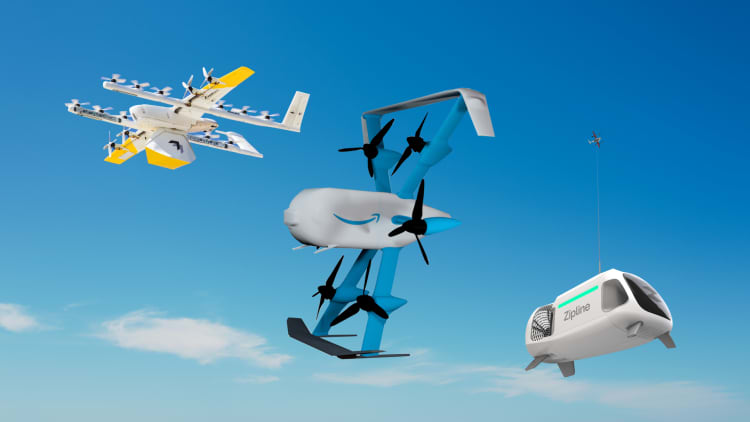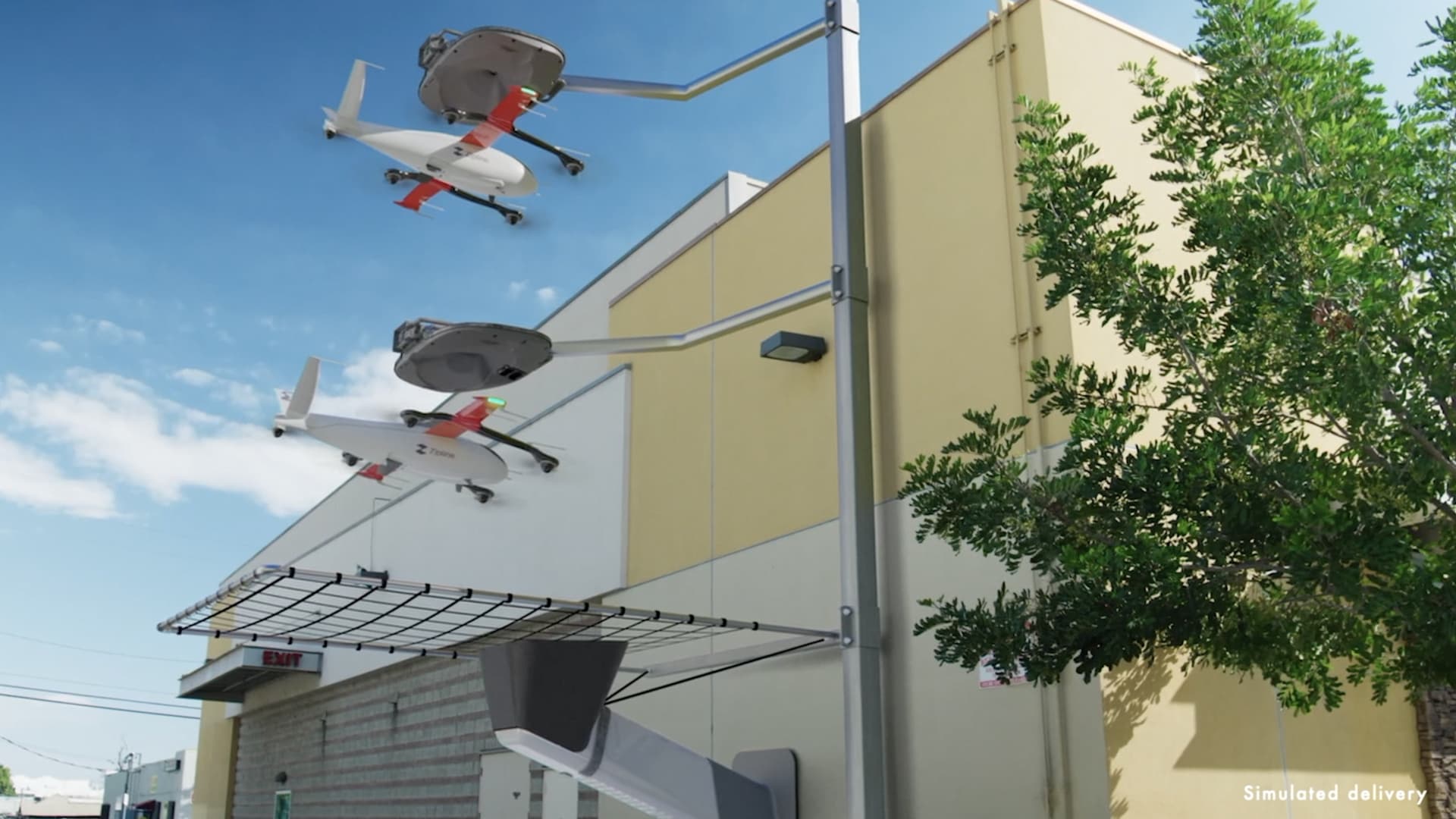A rendering of P2 Zips charging at a docking station.
Zipline
This week, drone delivery company Zipline was granted Federal Aviation Administration approval to fly drones beyond the visual line of sight. That’s a major milestone in efforts to extend the range of the domestic drone industry over U.S. airspace, and Zipline isn’t the only drone operator to recently receive FAA approval.
In a series of moves in August and earlier in September, the FAA gave the same clearance to UPS subsidiary Flight Forward (which delivers packages by drone), avionics provider uAvionix, and drone inspection provider Phoenix Air Unmanned. It’s a regulatory aim that the drone companies have been working towards for a decade and will pave the way for other companies to receive streamlined approval for their own drone flights beyond the visual line of sight, as well as for more consumer companies to accelerate efforts to deliver goods by unmanned aircraft.
The FAA told aviation publication Flying that the approvals will serve as the basis for “summary grants” in the future as it continues to work towards formal rulemaking and to help fast track business models similar to the ones to receive the first approvals, meaning package delivery, drone inspections, medical supplies and drone aviation system development, such as uAvionix.
Prior to “beyond the visual line of sight” approval, human observers were required to be stationed along the entire route a drone was flying to ensure that there was no interference with air traffic. The new regulations allow for drones to be flown without observers, which the companies say will increase accessibility and scalability of what’s still a nascent business in the U.S.
“For the last few years, we’ve been operating in the U.S. with training wheels,” said Zipline CEO Keller Cliffton. “We were able to make deliveries to homes but we always needed to stay within a mile-and-a-half of our distribution centers, which made it easy to serve tens of thousands of people, but impossible to serve hundreds of thousands of people.”
Now he says Zipline will be able to serve “hundreds of millions of people” in the U.S.
“It unlocks the scale of the technology so that everybody can benefit. And, at scale, this technology will save people a lot of money, and it will also save lives in the U.S.,” said Cliffton, whose company began in 2014 as a drone solution for emergency medical deliveries in hard-to-reach geographies but has expanding into multiple sectors and has deals with retailers including Walmart.

In March, Zipline released its drone Platform 2, or P2 Zip, which can carry up to eight pounds within a ten-mile radius, finish flights in about ten minutes, and land a package on a space as small as a table or doorstep.
“The reason that number is important is that when you look at e-commerce in the U.S., a vast majority of packages weigh five pounds or less,” Cliffton said in a conversation with CNBC about the new drones in March. As far back as 2020, the company was part of drone tests with Walmart in Arkansas. Early this year, Walmart announced that with partners including Zipline, DroneUp and Flytrex, it had grown to 36 drone delivery hubs across Arizona, Arkansas, Florida, North Carolina, Texas, Utah and Virginia.
The FAA approvals mean the regulator is satisfied that the drones can safely operate with autonomous technology to monitor airspace and avoid aircraft that they may encounter. Zipline’s drone programming enacts 500 preflight safety checks and has an acoustic avoidance system, though was still unable to fly beyond the line of sight until it received FAA approval.
The list of products that Zipline — a five-time CNBC Disruptor 50 company that ranked No. 25 on this year’s list — is flying since it started as a medical care supplier in Rwanda has grown to include food deliveries, prescriptions, agriculture products, retail items, and medical supplies for both humans and animals.
“Approval of an onboard perception system that enables beyond visual line of sight flight has been the holy grail for drone delivery for the last 10 years,” Cliffton said.
And he says there are global implications of the long-awaited U.S. decision.
“Both the FAA and Congress know that it is really strategically important for the U.S. to stay in the lead when it comes to this fundamental technological transformation that’s happening, where it’s suddenly now possible to build the first logistics systems that are fully zero emission and automated,” he said.
“I think some people have seen how much other countries were growing on this front and thought maybe the U.S. was going to fall behind, and I think this is an exciting demonstration that the U.S. may be a fast follower of a few other countries, but that in general, the U.S. is going to be a global leader when it comes to this industry.”







